My very first blog post was about my experience with Internet and phone service on planes, and its early disappearance. Now inflight Internet service is reappearing, at least in US domestic routes. The point I was making there was that airlines are experts at pricing airline tickets, maximizing yield. However, they couldn’t figure out how to price and market telephone and Internet service inflight. Well, it seems like not much has changed, at least on some airlines.
I travel quite a bit, mostly on Continental (now in the process of merging with United) – which I mostly enjoy. This morning I boarded an early morning coast-to-coast Continental flight of over 5 hours (and I was not upgraded). Each seat, even in economy, had a nice-looking entertainment system with over 90 channels of DirecTV satellite TV as well as several movie channels and more. The passenger sitting next to me commented upon arriving at his seat and seeing the system: “now that’s the way to fly!” Little did he know…
Well, a few minutes into the flight, the “preview” was over and it became clear that in order to continue using the entertainment system, one needs to pay $7.99. I had a lot of work to do, so went directly to my work. My neighbor also decided not to pay for the entertainment and dove into a book.
He was not alone.
A couple of hours into the flight I walked around the cabin and it was quite striking to see that nearly no one had actually paid the $7.99 to turn on the entertainment after the preview. In fact, mid-flight, I counted only 3 out of 138 passengers had paid for the entertainment service. By the time we landed only 11 of the 138 passengers ended up “caving in” and buying the service to relieve their boredom at a price that at least 8 of them first felt was more expensive than they would have liked to pay.
It became obvious to me that while this was the ideal flight for the airline to sell the service on (a long daytime flight), and should have been the most profitable for this sort of service (one that has no incremental cost to deliver), the airline was not maximizing its yield – not by a long shot.
So, was it worth it?
This service generated a grand total of $87.89 on this flight. That’s less than a single ticket, of course. However, on the flip side, the airline also had 127 (92% !) disappointed passengers. These passengers first became aware of an exciting service, played around with it, and eventually decided not to use it because they deemed it too expensive. I consider this a bunch of negative publicity for the airline.
I decided to try to infer a price-sensitivity curve from this “sample population” and see what might have been the right price for this service had the airline wished to maximize its revenues. Continental might have thought that it could potentially make as much as $1,102.62 from this flight (138 x $7.99). But it actually grossed a mere 8% of this potential. So I made some reasonable assumptions and developed this price-sensitivity curve:
Also, I estimated that each person that didn’t buy the service actually “cost the airline” an estimated $1.50 “worth” in negative publicity. This is a bit arbitrary, but there was certainly a disappointment felt by those that did not buy the service because they felt it was too expensive. Indeed, I overheard some passengers saying that they should have flown JetBlue in order to avoid this “silliness” as they called it (there the service is free). Hence a cost of negative publicity should be associated with all those whom chose not to use the service. So I drew up this chart with “total” revenue and “net” revenue per price point. Total revenue is the gross proceeds while “net” revenue considers the negative publicity:
Conclusions from this analysis
So this is what I came up with as my projections given the behavior I observed and my estimates:
- The maximum nominal total revenues would have probably been reached if the service were priced at $2.99. At that price the airline would have made $231 (which would be $143, or 163%, more than they had actually made).
- Considering the negative publicity, a price of $1.99 would have maximized the “net” revenue at $153. Consider that at the price the service was actually charged ($7.99), I estimate the airline lost $103 due to the negative publicity. So $1.99 would have boosted the “net” revenue of the airline by $256!
In any case, a better pricing for the service would have been $1.99 or $2.99. Far from the price the airline charged ($7.99). Could Continental have raised the perceived value of the service to generate more revenue? Perhaps. But given the publicity and awareness the passengers were exposed to, these are probably better prices for all involved.
Bottom line
This service has significant capital and operational expenses. I doubt the service is profitable as it is. It should be no surprise to anybody that prices matter. Researching the price sensitivity and making in-flight observations of behavior might have led to a more reasonably pricing strategy. I am not an economist, this is just common sense.
However, there is a counter argument to this: Airlines have gradually stripped many of the in-flight services we once took for granted, such as meals, drinks, pillows, blankets, earphones, reserved seating, and more. People are perhaps reluctant to give anything to the airline beyond the airfare and would rather bring their own food, entertainment, pillow and blanket with them than pay any sum to the airline. If that’s the case, my projected price sensitivity might be dead wrong. But then again, with the App-buying culture, I’ve become accustomed to paying small sums for apps. So, for me, paying $1.99 for “some entertainment” is much easier these days than it used to be.
What would you do as a passenger? as the airline? any other conclusions you can draw from this experience?
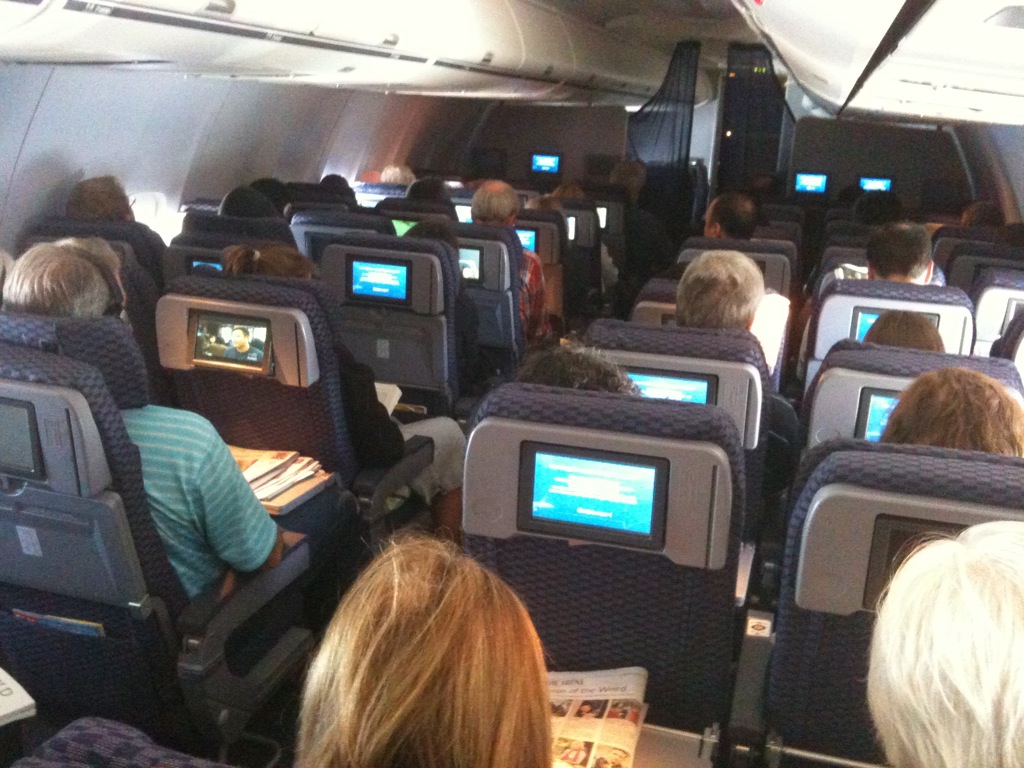
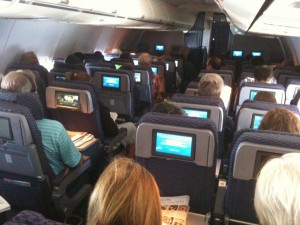
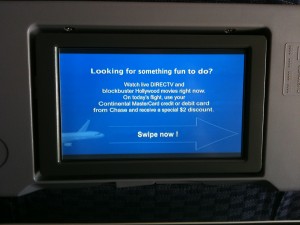
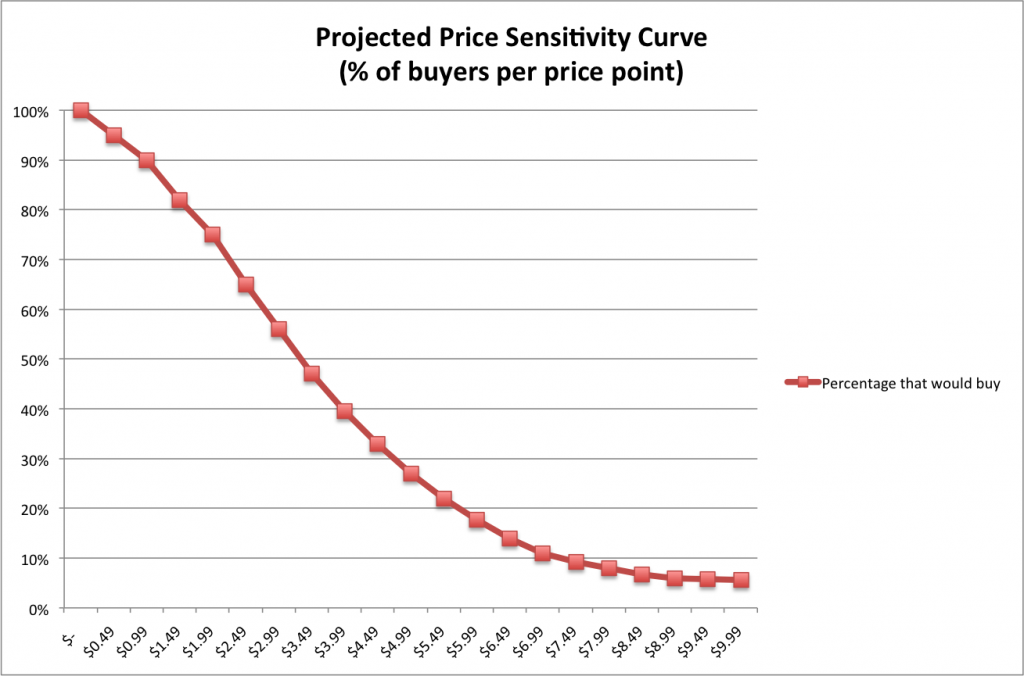
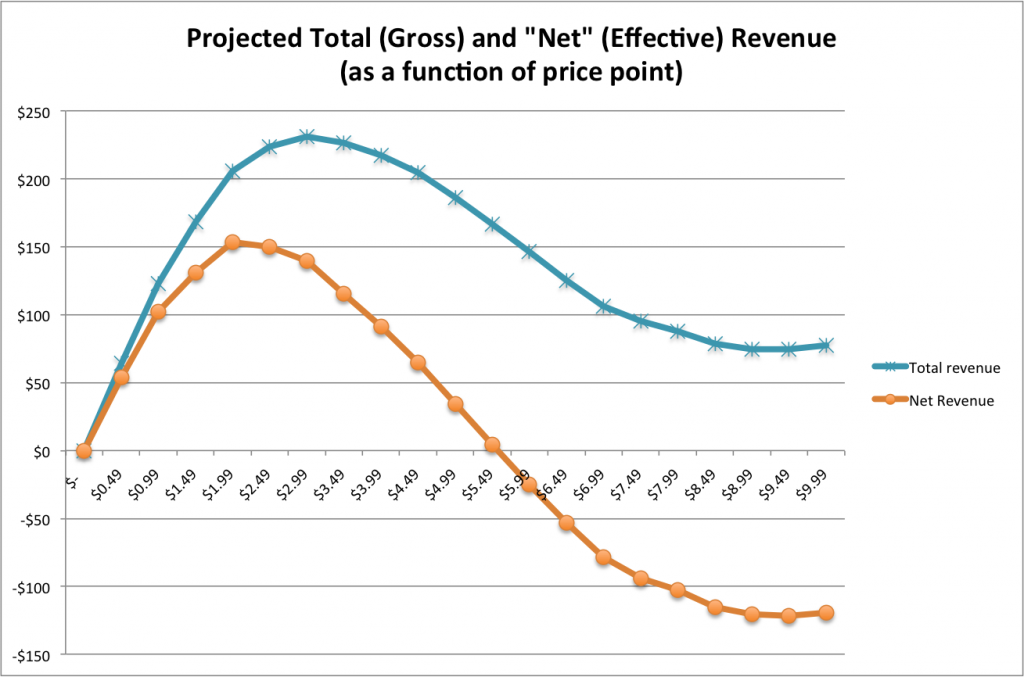
Good blog as ever Tal. I’m enjoying these. I thought half way through this blog that you were going to suggest that the airlines stick to their core competency and implement a dynamic pricing model where the price falls relating to the amount of flight time left. now that would engage the brain cells – calculating whats the cheapest price I could view my chosen movie for :-).
The price elasticity of inflight entertainment is high (as you pointed out) With the proliferation of ebooks and other hand held gadgets, it will likely get higher. If airlines can provide a greater entertainment experience than a 7 inch screen and mediocre earphones, the marginal value could bring greater interest for travelers – and justify greater results. We’ll have to wait what the competition will do to set the price and experience standard. (The Lufthansa Airbus A380 flights are impeccable.) I somewhat disagree with the negative publicity impact bit because most people choose airlines based on price, routes, and to a smaller degree mileage points. Another way to look at this – improved customer analysis – if the airlines understand who’s flying and why they’re flying, it may help the airlines to improve the design of their offerings to achieve greater brand value.
Nice post. The interesting point for me is trying to understand the fundamental reason WHY a person who would have no problem paying $10 to see a 90 min movie at the theatre would consider $8 to be too expensive? I have a sense that it is not necessarily the price that was a problem but rather that the content available was not deemed worth it….
I think that price is also a factor of the flight duration. For longer flights people probably be willing to pay more.
Another aspect to think about it the availability of smart phones and tablets. I have hours of content for flights on my iPad, I don’t think I’ll pay for in-flight entertainment. This summer on the other hand, I’ll be flying with my 3 sons and it won’t be possible to bring 3 devices, this can be a case where I’ll be willing to pay (I guess other passengers will be willing to pay for it for some peace and quiet from my kids 😉
the airline should also conciser the fact that keeping passengers captive to their screens can prevents lots of hassle from flight attendants and improve the service leading to a better customer experience.
Now to a very important question: Can you recommended a good movie?
Tal – very fun, very thoughtful post!
I loved the starting point, which very much resonates with where economy airlines are these days. But by the end of the analysis I got to wondering this: if price sensitivity and customer advocacy are such issues to airlines (which they of course are), then why not cut the crap and bundle $2.99 into the ticket price? For starters, people on airlines like Continental hate being nickel and dimed in the first place (who doesn’t?). And then it simply becomes a competitive differentiator – all this entertainment built into the price? So the way to fix the pricing situation is through better marketing of the overall service. But that feels too much like the airline industry coming full circle…
And in any case, you mentioned that on JetBlue the service is ‘free’ anyway…
So what to do? I guess if this proves anything, it’s that small incremental ‘services’ that cost extra are not good ways to differentiate and prove the value of a business’s core service. Often they are launched with their own P&L and their own business case – sometimes fatal for the success of the overall service…
Tal, good post. I travel a lot mainly to Latin America and lately I have used Avianca. Their services is superior to the American carriers. You have “meals” in all the flights and the entertainment is “free”. Additionally, their fleet is newer. When I ask myself why Avianca and not AA, where I am an Executive Platinum with over 3.5 million miles, the answer is easy; Price and Service. As a customer I am not willing to pay US$100 more on most American carriers to receive what I called the minimum level of on board service.
I do believe that there is a negative cost to the airlines that do not provide those services or that overcharge for comfort (luggage, seating, entertainment, etc.). Those who continue to do it are the ones that have the routes locked from their competition. Spirit vs. Southwest is an example. However, it will be interesting to watch Spirit compete now that Southwest bought Air Tran who has similar routes as them.
Finally, regarding entertainment I believe that the rapid progress of technology and it cheaper operational cost will eventually allow all airlines to provide it if not for “free” at minimum at a very low cost (<US$2).
One additional complicating factor. We don’t know what variable costs the airline may be paying to the service provider. Perhaps they already agreed to give directv $3.50 per “subscription”, or perhaps they just paid a flat rate per flight, or per month, or whatever. With there airline yield curve we can understand the variables per additional passenger (fuel, etc), but this is one has more opaque variables.
Thanks again for the terrific comments. Some feedback thus far:
Martin, yeah, I thought about it, but dynamic pricing inflight would be too weird – that is unless they somehow make it a game. I also wonder what half a movie would cost in that case, or how refund policy would work in case of, God forbid, an emergency landing interrupted the movie…
Lee, good point about more understanding of the customer base. That said, the current price point seems way off. I did model the negative experience with $0 through $2. It’s not more than $2 nor is it less than $0 (of course). Results are not fundamentally different. The price they should have charged were probably $1.99 – $3.99 (at highest), if at all!
Amit, the content was actually terrific. Live sporting events, news, etc. 95 DirecTV channels + another 10 movie channels. For the full lineup check out here. I’m quite sure anybody could have found something to watch that suits them. When I get upgraded and sit in first class and get the service for free, it is a sort of anti-productivity drug… so to some degree, I’m happy it cost money, I could focus on work for the whole flight.
Shai, the price actually does depend on the flight duration. For shorter flights the price is $5.99 and for longer US domestic flights it is $7.99. You also get a $2 discount if you use a specific airline-sponsored credit card (that I believe is being discontinued with the merger with United). As for a good movie, I recently liked Unknown with Liam Neeson 🙂
John, this indeed has gone full circle. Since 9/11’s induced airflight crisis and then the hike in fuel prices in the last 10 years, airlines have “adjusted”. As I said, pillows no longer are available in these domestic flights, for example. All meals are only for purchase, etc. The full-service airlines need to consider how far they’re willing to go, and everybody is trying out different strategies. It’s not a simple answer – but when you analyze one service at a time, such as this one, it’s easier to figure it out. One more thing to consider – with price-comparison shopping, a lot of people now use Expedia, Travelocity, Priceline to purchase tickets – there they look at the lowest fare. Any $3 to the ticket might move one airline from that “desirable” spot. So taking out all the frills and nickel and diming the customer is what they resort to.
Claude-Philippe, I agree that this nickel and diming and total no-frills sucks, especially on the longer flights. I also agree it’s a question of the competitive landscape and what people value.
Dom, you are absolutely right. When I say the incremental cost of the service is zero, that’s not strictly true. There obviously is a 3rd party from which either the service or the content is licensed. I think that if the overall income from the service is less than $90 per flight with 8% uptake, that cannot be good for the airline, and therefore, it would be able to possibly renegotiate its agreement with the provider to be more aligned with its and its customers’ interests.
Thanks for the encouraging feedback!
Tal
Tal, great discussions as always.
Well is now 7.99 I think they started at 9.99 few years back –
In your model you don’t model Cost of capital – and operation and Satellite provider fees. – which is fine as this is more in the consumer perspective type of analysis. but make it worst at the balance sheet.
One add though maybe we are blaming the airlines and the fault is on the Satellite providers price structure – I don’t know – sadly trough depreciation a bit of the red ink is shaved
I will separate the problem in two fronts. One is legacy displays (those brand new displays on the back of the seat) – and the other is the connectivity proposition.
On the first, as many pointed on tablets and own content, the airline displays are IMO dead and they missed the opportunity to capitalize on that – So they should now offer that as complimentary as your overhead light or fresh air knobs. For offline content, they can’t compete with tablets and eReaders that will be the norm, not the exception.
Looking back the video proposition is not different (but as scale of bits) to the free and complimentary music channels any one offers – which are in competition with consumers since the days or a nearly forgotten word -a walkman
Why video will be different?. No, but the business model changed – besides bulky laptops, 2 years ago no one had a clear grasp on video tablets as today – so get rid of this screens or make them free – because I wish I can just turn them off, it is annoying that continuous banner asking you to pay. I’ll make $5 lost for not paying screen users, even more, I challenge priceline or travelocity to advertise flights w/o screens – and they will collect the money by increasing sales – maybe a good startup to build that database (J.K.)
Finally on point 1 (still need to get to 2).
They definitely don’t want to be engaged on business that are not theirs. Like selling food. Paying $5 for $1.3 worth of snacks is just a necessity if you have no space – does not want the hassle of buying it, or was late for the flight. It seems to me that the airlines have hard time to decide how to integrate their services in their priorities – Rather than a business is a formalism w/o engaging on what customers need or want – not even creating necessities for them.
The second point is online access from an airplane. Need of connectivity will be like the air we breath even on short flights – think of a SMS addicted person: will he/she pay $5 for unlimited texting during a flight? – but more importantly, email for business, etc. . Today you pay $10, $12 per day on a hotel for internet, The whole day span seems to be a need – slowly immediate connectivity anywhere maybe in the top priority of human behavior. That is where I see a potential niche market could be to priced more as added services (but perhaps no more than 1/3 of a full day hotel rate, or hourly based hotspot costs).Perhaps the infrastructure is not ready at this point. – Besides satellite internet, a distribute platform that triangulates on LOS with other on-flight planes and a very dynamic routing model. nonetheless, that technology is being used/or proposed for navigation systems themselves – and eventually real time black boxes online backup – if aligned with consumers needs, that maybe a great business opportunity – on air and on land. But the question is are airlines really interested on entertainment/telecommunications as a source revenue, or more a cost of servicing customers?
Perhaps this is business for a telco provider that leases a piece of real state/location of flying airplanes (a quick google on simultaneously airplanes on air in US – > IFR -instruments flight route and 5000 VFR visual flight route) by having a 5000 tower network on the sky at business time – When you look at the implications of this from a technical and logistic perspective maybe you find an answer of why they should better focus better on traffic interest and packaging gateways instead.
Eduardo
Tal, Great post!
I always thought that airlines made a big mistake not addressing add-ons at the point of sale. Imagine if you could purchase an airline ticket with internet service, meals, entertainment fees at the time of ticket sale.
If you’re buying a ticket for $500 and they charge you $9.99 for internet or $7.99 for entertainment or $9.99 for a meal, your ticket price could go up to $530. That’s nominal, and it’s an easy sale. Most folks expense their ticket anyway, and websites and agents should just ask for add-ons the same way they used to ask for smoking/non-smoking seats.
Airlines could potentially even save money by having entertainment seats fitted only in certain parts of the plane and then offering the special service seats to just those travelers that pay in advance. While their at it, a power plug could be fitted in those internet seats.
I was just on a 14 hour flight. The in-seat entertainment thing wasn’t working due to a mechanical problem (the little clip that you need to pull to unfold it was broken and no amount of tugging by the handsome male flight attendant could solve that). I’d be dramatically more upset about it if I’d paid anything for the right to be entertained by an edited version of Leo DiCaprio in a dream in a dream, even though objectively $5 or $10 would be completely negligible. People are like that.
One thing I’ve seen that I thought was very clever was the Air Canada model – if you don’t want checked in luggage you get a discount. No airline mile accrual? discount. No seat selection? dis-count. This does put them at a slight disadvantage as they still show the full fare on the search engines, but I’m sure they’ll be able to negotiate that at some point. It certainly feels much better that way and reduces consumer resistance.
I don’t believe in price sensitivity at all by the way, the middle classes are nearly blind to pricing and it’s all a matter of framing things correctly and putting consumers in the right mindset. The airlines are far from being experts at that… time for Apple Airlines 🙂
i wouldn’t be surprised if the airline is not the service provider and has no say in the pricing — instead opting to get paid as a revenue share deal per activation. really, they can barely get through loading zone 1 – so it makes sense. be curious to find out.
just read that 20% of the airline revenue is now add-ons (bags, premiums seats, drinks, etc.). so, this fits their model – no matter how stupid it is.
i actually paid british airways $30 today just to get a seat assigned to me more than 24 hours out. that’s right — if you want a seat assignment before check-in, you have to pay for it (at least in my case). wow.
Tal, great analysis
I would like to add two points:
The airlines abused the captive audience by raising fare and charging for Addional services. The fare share in the revenue reduced
Taking this facts into consideration it means that the audience don’t used or don’t like to pay for entertainment.
Judging from my experience in the Bussiness class aboard the 380 of LH cross atlantic most of the pxn Preffered working or sleeping over entertainment.
May be they are trying to sell the wrong product. I will pay more for communication thN entertainment
My response to the new comments:
Eduardo, indeed makes me wonder what would it look like if airlines begin charging for the fresh air vents and overhead lights… others have wondered about charging for using the toilets, really! Regarding Internet and phone service in flight – these services have re-emerged after disappearing for a while. Mobile phone service will shortly be possible via flying femocells… The problem in the US is the multiple technology stacks, so it probably would be either GSM-based on CDMA-based. Certainly inflight entertainment is something airlines should still remain interested in. They do differentiate themselves by the level of this service and while people do have their own personal gadgets, they do appreciate in-seat power and in-seat amenities.
Marc, the problem with the point of sale is that it is prone to online price comparison and people opt for the cheapest. Later, they might forget that they had selected the cheapest option, which has the most add-on fees… it’s a tricky issue. But if they already have the whole airline fitted and unused, that’s certainly costing them or not recovering their investment.
Ori, on your 14 hour flight, had you complained enough about the entertainment not working, you would have received either a bucket-load of airline miles or even a voucher to redeem on future travel. Regarding Air Canada – I think it’s good to see airlines experimenting, but I truly believe people want LESS choice in these things. They want to have a pleasing experience and would favor, by demonstrating loyalty resulting in repeat business, airlines that make the overall experience more positive. The overall experience includes safety, cleanliness, timeliness, and other forms of convenience and comfort.
Matt, true, the airline may not be the service provider. However, whomever is the service provider, they’re not maximizing yield. Yes, wow (about the $30 to reserve seating in advance). I think this pendulum will shift and we’ll see back to simpler pricing from nickel and diming. I just don’t know when that will happen. These micro-fees are not a “law of nature” – they can be arbitrarily set at either end of the spectrum.
Doron, as Matt says, it’s as much as 20% that they make from these add-ons. Read my very first blog post from 2006 – about how they mispriced phone service and Internet services on airlines as well…
The amazing thing about all of this is that airlines price the tickets optimally, but the add-ons – they still haven’t gotten a grip on these.
A few youtube clips related to this topic:
Tal
In-flight entertainment should try to compete on things your mobile devices will not provide easily. Large sceens with excellent contrast, glare protection and no smudge. Noise cancelling earphones with better performance than a portable pair can provide that use reference microphones in the neighboring seats to better predict the noise. If they’re good enough people will pay just for keeping them silent with no entertainment.
I’m just not sure whether that can be done for a price people will be willing to pay.
Tal,
I agree with you that the pricing is not right. However lowering the price will only be a short term solution.
The bigger challenge the airlines are facing are passengers carrying far better entertainment devices than those even offered in the business class. Since I have my iPad I do not use, as other readers of your blog ,the in-flight entertainment.
I noticed that more and more , including business class, passengers , spend most of the time with their tablets.
As a frequent flyer passenger I hope that airlines will soon start offering iTunes vouchers for rental movies I can choose myself before the flight.
I believe that it is time to stop investing in proprietary in-flight entertainment devices and rely on the passengers tablets.
A few weeks ago I wrote about it, after some long transatlantic flights, in my blog http://mstawinski.blogspot.com/2011/04/ipad-great-future-in-flight.html
What do you think ? It looks like flying time is good for some innovation 🙂
It would be interesting to see if the groupon type model could work well for the inflight Directv service. $7.99 regular price, but if 100 passengers agree to activate during the preview everyone gets it for $4. Passengers would be encouraging each other to sign up so they can all get the deal!
Very interesting writeup, thanks! 🙂
A quick, non-scientific thought – I think a scheme that could have worked is like as follows :
1. When ordering a ticket, you can order it with this package for additional (e.g.) $4.99
2. On the flight itself, you can buy it on-spot for a somewhat higher price (e.g. $7.99)
The reason is that when people make a big expense as a flight ticket and imagine the long daytime flight in advance, it’s much easier to shell out the $4.99 for the package (especially if you know the on-flight price is higher). And when on the flight, if a considerable number of people is using the system and/or one has a specific need for it, one is likely to still shell the higher-but-still-pretty-low price.
Anyway, that’s a quick thought, later on I might find a reasoning flaw in the above 😉
Great post. I agree with most of the assumptions. I too fall into the category of the virtual focus group you created.
I think the airline could have done some very cheap A/B testing. During the initial launching of the Direct TV system, they could have changed the pricing on each flight to see which one would have optimized their revenue/cost ratio. Why guess when testing reality is so cheap now a days?
Revisiting the topic,
the RFID journal july/August 2011 has 101 innovative ways to use RFID technology. JetStart – budget airline – provides ipads preloaded with movies to passengers – RFID is used to check all devices are returned, – That is a intermediate step on Marek Stawinski vouched model – before tablets are as common as cell phones.
A further step will be owner enabled NFC tablets to pass those vouchers to owner tablets with option to watch and/or buy the content with additional margins to the airline though